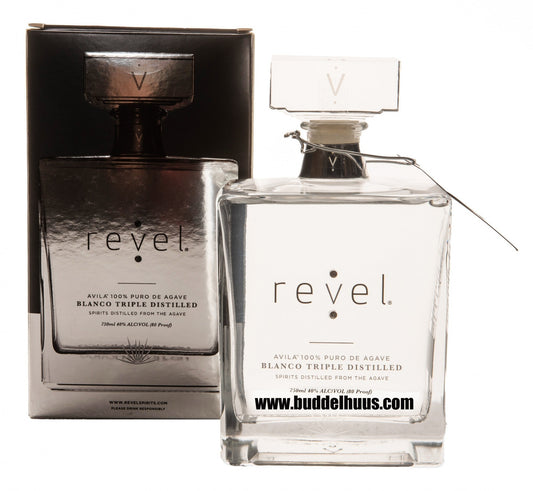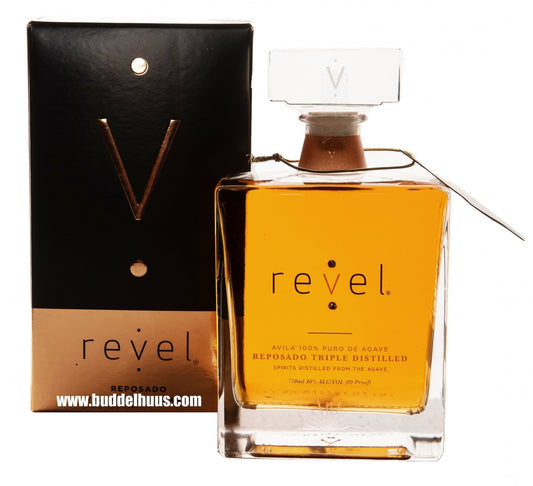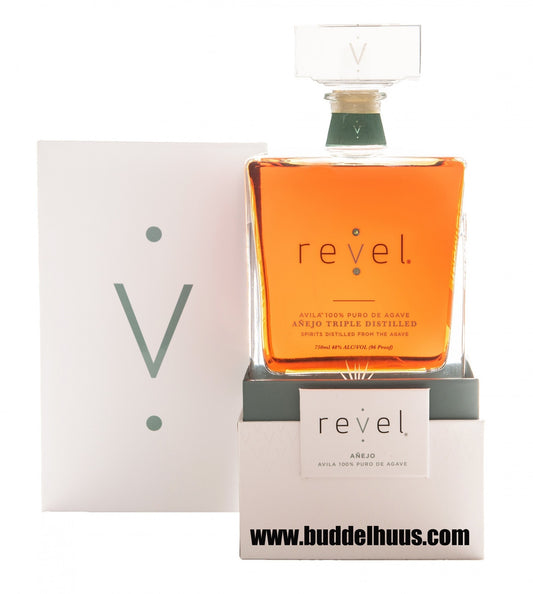Our Tequila Range
-
Revel Avila Blanco
Regular price CHF 80.00Regular priceUnit price per
-
Revel Avila Reposado
Regular price CHF 95.00Regular priceUnit price per
-
Revel Avila Anejo
Regular price CHF 180.00Regular priceUnit price per
History and Origin of Tequila
Tequila was first produced in the 16th century near the town of Tequila in the central Mexican state of Jalisco. The officially established city in 1666 is the namesake for Tequila. The Aztecs had previously extracted a fermented beverage from the agave plant, known as octli, later Pulque. When the Spanish conquistadors in Mexico ran out of their imported brandy, they began distilling the fermented pulque obtained from agave sap. This marked the birth of Mezcal, later refined into Tequila.
While the majority of Tequila is produced in the Mexican state of Jalisco, Mexican law allows Tequila production in specific communities in the states of Tamaulipas, Nayarit, Michoacán, and Guanajuato. Similar to Champagne, Tequila is a protected designation of origin in many countries.
The myth that every bottle of Tequila contains a worm is false. If you see a bottle with a worm, it's not Tequila but Mezcal. The worms used in various Mezcal varieties for marketing purposes are actually larvae of a moth species native to specific agave plants and have no influence on the drink's flavor.
100% Tequila and Tequila Mixto - Tequila Classification
Tequila is divided into two categories: 100% Blue Agave and Tequila Mixto. These are further categorized into five types: Tequila Silver, Tequila Gold, Tequila Reposado, Tequila Añejo, and Extra Añejo.
Tequila Silver, aged less than two months, is clear and has an intense blue agave flavor, often used in cocktails like Margaritas. Other names include Blanco, Plata, White, or Platinum.
Tequila Gold is similar to Blanco but is either not aged or aged for a maximum of 60 days. Tequila Gold is a blend of Blanco with Reposado, Añejo, or Extra Añejo Tequila. Other names include Joven or Oro.
Tequila Reposado matures in oak barrels for up to twelve months and is suitable for cocktails. Reposados are 100% agave Tequilas.
Tequila Añejo ages from one to three years in oak barrels, acquiring a toasty vanilla and citrus taste.
Tequila Extra Añejo is aged for at least three years, boasting a smoky, mellow flavor, considered a true alternative to whiskey, Armagnac, and Cognac.
According to the "Norma Oficial Mexicana" (NOM), each of the 100+ Tequila distilleries is assigned a four-digit number by the government to trace the producer or bottler. Well-known Tequila brands include Olmeca, Sierra, Casa Noble, Patron, Cuervo, Sauza, El Caprichio, and Esperanto.
Tequila and Mezcal - the Unequal Twin Brothers
Every Tequila is a Mezcal, but not every Mezcal is a Tequila. Mezcal is also a distilled spirit from agaves but can be produced from different agave species, unlike Tequila. Worldwide, there are 166 agave species, with 125 found in Mexico. Approximately 30 agave species are used for Mezcal production, with only one, the blue agave, utilized for Tequila.
The blue agave, growing 1.2 to 1.8 meters tall, thrives in the silicate-rich, volcanic soil in Jalisco and surrounding Mexican provinces. While agaves share similarities with cacti, they belong to the Lily family, with Yuccas and Amaryllis as their closest relatives.
To comply with the official Mexican standard (NOM), all agaves for Tequila must be registered with the Tequila Regulatory Council (CRT). Over 22,000 registered agave farmers in Mexico cultivate around 300 to 400 million agaves across approximately 125,000 hectares. Depending on the location, it takes up to twelve years for a blue agave to mature. The hearts of the plants, resembling pineapples and referred to as Piñas (Spanish for pineapples) by Mexicans, can weigh up to 180 kilograms. The Piñas contain aguamiel (honey water), a sugary plant sap used to make Tequila.
From Aguamiel to Ready-to-Drink Tequila
Harvested plants are cooked in traditional Horno ovens or modern autoclaves for 24 to 48 hours. The cooked agave hearts then cool for an additional 16 to 48 hours to complete the cooking process. During cooking, steam softens the Piñas' texture and hydrolyzes inulin into fructose. After cooling, the agaves are pressed and shredded. One method of breaking down the Piñas is the Tahona process, where a two-ton volcanic stone wheel slowly crushes the cooked agave. The final set of rollers presses the dry fibers, acting like a wringer, to extract as much juice as possible. The watery juice passes through a Pachaquil, which removes larger particles. The size of particles in the fermentation and distillation processes also influences the final taste of Tequila. Only seven Tequila producers still use this method.
When producing mixed Tequila ("Mixto" Tequila), sugar cane or corn sugar can be added at this stage, constituting up to 49% of the fermentable mass. The choice of yeast (or yeasts) and any other additives during fermentation determine the taste and characteristics of the final Tequila.
Fermented juice from a previous batch is mixed into new fermentations to ensure consistency in flavor and quality.
Fermentation can occur in open or closed wooden or stainless steel tanks, lasting 24 to 96 hours and resulting in a beer-like mosto with an alcohol content of 3.8 to 6% by volume, subsequently distilled. The product of the first distillation is a simple agave brandy called Ordinario. Only after a second distillation can the distillate be called Tequila. Although rare, some distilleries opt for a third distillation. The second distillation typically produces a distillate with an alcohol content of about 55 to 75% by volume. A few distilleries aim for 55% alcohol rather than higher levels to preserve the agave aromas better.
Tequila resulting from the second distillation can be bottled and sold as "Blanco" Tequila, while other types must age in oak barrels. Over time, tannins and flavors from the barrels make the Tequila smoother and add character. Unlike the categorization into different types, Tequila does not have regulations regarding minimum or maximum alcohol content. It is generally accepted that Tequila should have an alcohol content of at least 38% by volume. Most ready-to-drink Tequilas range between 35% and 55%.
Additives such as caramel color, sugar syrup, flavorings, and other additives are permitted in Tequila. Up to 75 grams of sugar and 85 grams of other additives can be added per liter. However, the total dry mass of additives must be less than one percent of the total volume. Distilled or demineralized water is used to dilute the distillates to bottling strength. Before bottling, Tequila is filtered through media such as charcoal or cellulose at room temperature or through cold filtration.
Mixto Tequilas intended for distribution outside of Mexico are often sold as "bulk" and exported in tanks with a high alcohol content. Only in the destination country is the Tequila diluted to drinking strength, bottled, and sold. In contrast, "100% Agave" Tequila must, by law, be bottled on-site in Mexico. For pure Tequila, alcohol content between 35% and 55% by volume is allowed.



